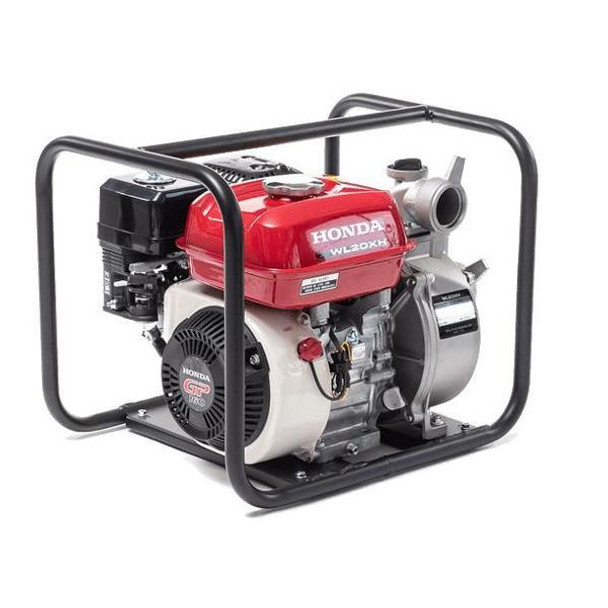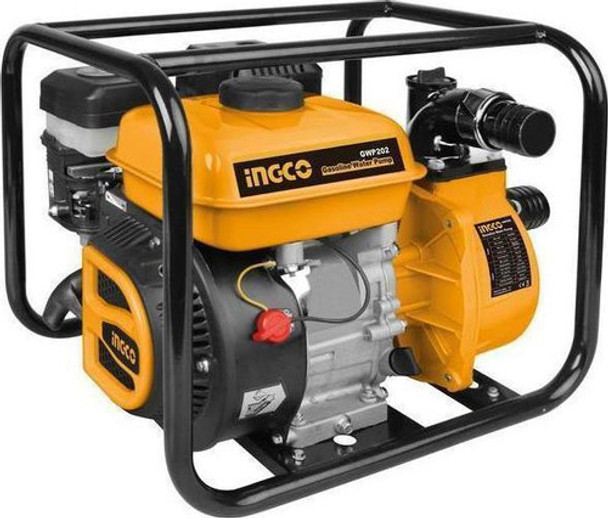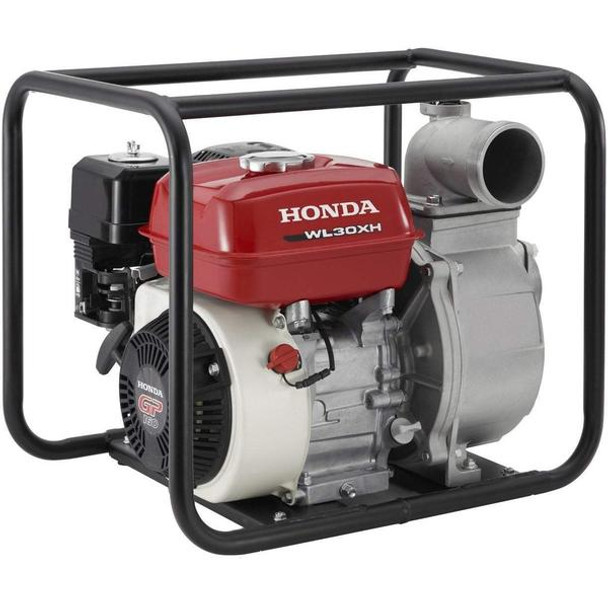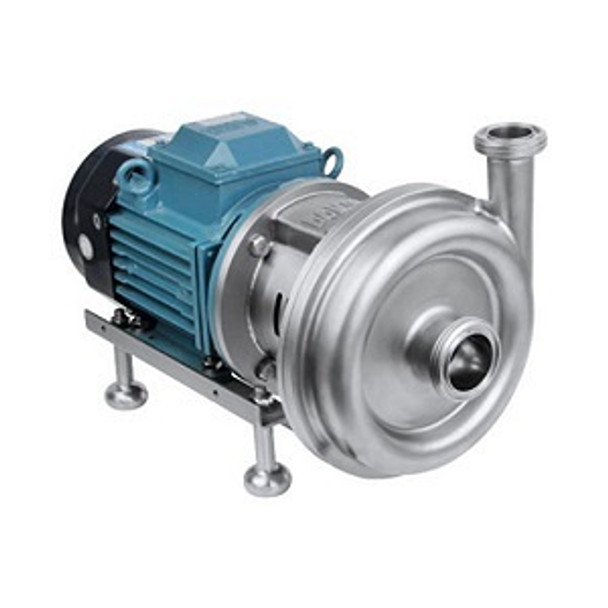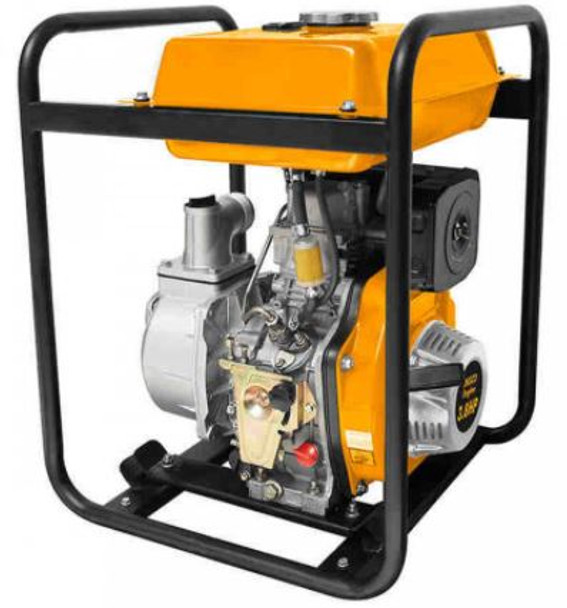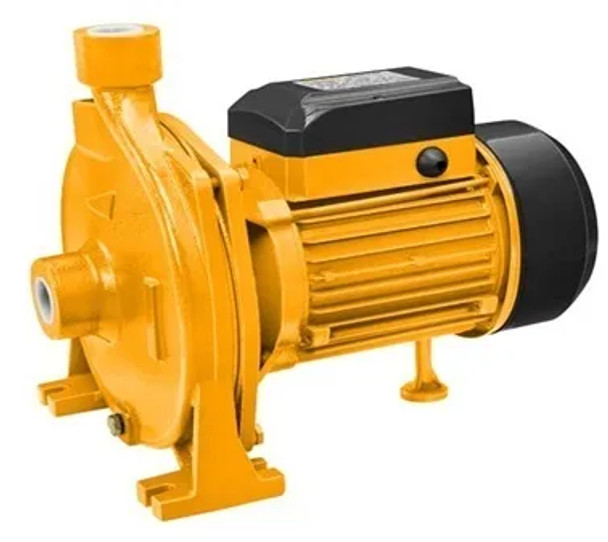HOW TO RESOLVE WATER PUMP FAILURE
Water pumps are little heroes in our homes but are usually forgotten until we have a problem. As long as you buy a good quality pump they are generally very reliable working without attention often for years on end. They are inexpensive but an essential component in the systems that make our lives comfortable. Would you want to go back to a well and a bucket when flushing the toilet or having a shower?
Buy Online... Honda Water Pump WL20XH
Generally speaking, a well-selected water pump will be productive and efficient for a long time. A water pump’s submerged system design and “flooded suction” negates many pumping issues. However, neglecting to monitor the pump’s output over time will mean changes are not detected, which could result in a costly repair to the pump system. Understanding the makeup of your pumping system is crucial for protecting it from failure, as not all pumps are the same. However, there are still certain common factors that, assuming you have chosen the right pump, can impact your pump’s lifespan.
Here, we look at the most common reasons for pump failure, and how you can
minimize the risk of them happening. Hoping that this meets the need of most you have in your facility because there different types of water pump. we cannot cover all of them in a single article
Causes of water pump failure
- Pump Too Far From The Water Source
- Level of water
- Reduction In Supply Line Diameter
- Intake line obstruction
- Unchecked changes in pumping conditions
- Iron contamination
- Improperly Connected Motor
- Motor failure
Buy Online... Gasoline Water Pump INGCO GWP302
Types of water pump
There are several types of water pumps including positive displacement pumps and centrifugal pumps, which provide the same service, however, operate differently.
The core concept of a water pump is to use a motor to convert rotational energy or kinetic energy and turn it into energy for moving fluid or for fluid flow (hydrodynamic energy).
Centrifugal Pump
The Centrifugal pumps work with an impeller, fluid enters through the rotating impeller and is
expelled out through centrifugal force through the impeller’s tips. The process of this increases the velocity and pressure of the fluid and directs it toward the outlet of the pump. A type of centrifugal pump is a submersible pump.
Reciprocating Pumps
Reciprocating pumps are positive displacement pumps that have an expanding cavity on the suction side of the machine and a decreasing cavity that is located on the discharge side of the machine. The water pump works by alternately filling the cavity and then displacing the fluid with each cycle having a constant volume no matter the pressure or the pump head that is used.
Submersible Pumps
Submersible pumps operate under the principle of Electric Submersible Pumping (ESP). This is
achieved by lowering flowing pressure, which decreases the pressure at the bottom of the shaft in which the submersible pump sits. The motor of an ESP system is also designed to function under high temperatures (up to 300 degrees Fahrenheit) and high pressures, so it is used in situations where very deep wells are common, such as oil wells.
Buy Online... Honda Water Pump WL30XH
Causes of Water Pump Failure
One of the most common problems with water pumps is a reduced or lower than expected water flow. When you need to dewater the Jobsite, low flow means more downtime for the crew, costing money and putting deadlines at risk. Often, low water flow is less about your water pump and more to do with the situation. Below are a few things to review to troubleshoot water pump problems involving low water flow.
1. Pump Too Far From The Water Source
The greater the distance a pump has to pull the water, the lower the flow rate will be. Get too
far from the water source and the more power is dedicated to ‘sucking’ the water and less to discharging, reducing the flow rate. Typically, pumps should be with 20 feet of the water source. Depending on the typography, how high the pump is relative to the water, the flow may be reduced at even shorter distances. Your pump has individual specifications, so be sure you read the spec and operate within them.
2. Level of water
One might think that there are no limits to how far down you can draw the water in a bore given that, by definition, a submersible pump is designed to be submerged in water. However, there is a certain point at which the pump’s performance is affected and the pump itself becomes damaged. Your pump will come with its own NPSH-required drawdown limit, but if you’re still unsure, check with the team at GZ Industrial supplies so that we can advise you on how to proceed.
If your pump is stopping and starting frequently due to low water levels, it may reduce the pump’s lifespan and damage it. Knowing the maximum number of times your pump should be
started per day based on its motor diameter is crucial for preventing motor failure. Another thing that can help is monitoring the incoming power supply since a reduced voltage supply results in an increased amperage draw, which in turn will mean a higher operating temperature.
3. Reduction In Supply Line Diameter
Your pump is designed to operate with a certain diameter input line. In some cases, we have seen people attach a smaller than recommended hose or line (using reduction couplings). Depending on the intake line you use, it is also possible that the line crimps, or is “sucked in” on itself.
A few things to check. The intake line should be both the recommended size and at least the same size as the discharge line. Walk the intake line from the source to the pump and be sure there are no kinks If possible use a rigid intake line. Sometimes called non-collapsible hose.
4. Intake line obstruction
Anything that impedes the water’s flow into the line will cause a reduction in the flow rate. Debris blockage is a common problem with murky water; it can be hard to see the intake hose. But, operators should check to be sure there is no debris blocking the intake. The blockage usually happens at the filter as it does its job to prevent damage to the water pump. Remove the debris and reposition the hose to start pumping again. The intake filter or screen can also be the culprit even without debris. While you must ensure the filter is fine enough to prevent damaging solids from entering the pump, too fine a filter for the water pump will restrict the flow right as the water enters the intake. Be sure the filter is proper for the pump.
Buy Online... Hygienic Food Centrifugal Pump with Motor 3A Hellog
5. Unchecked changes in pumping conditions
A well-selected pump will typically give many years of good service, however, should the pump application change it will almost certainly result in an altered pumping condition. This may cause the pump to try and operate at a less than optimal point and could result in reduced flow, pressure changes, and often complete failure. If a bore pump operator is not using a pressure gauge, changes like these can often go unnoticed until significant deterioration has set in.
Setting up a pressure gauge for your pump can be very useful when determining if a change in the application has happened. Being able to monitor the power supply, flow, and operational elements of your bore pump can make a big difference when troubleshooting any problems that crop up.
6. Iron contamination
Iron oxidation and iron bacteria are two of the main factors that have a detrimental effect on borehole pumps. When these contaminants accumulate, they begin to clog and corrode the pump’s parts and can eventually lead to complete system failure. If you see red-tinted sludge or threads in your pump system, it is very likely a sign of iron contamination.
So, Cleaning and disinfecting the system is an effective method for getting rid of iron bacteria, and using a liquid solution can help to flush out any buildups of iron deposits. In addition, an in-line filter can assist with capturing and constraining these impurities.
7. Improperly Connected Motor
Centrifugal water pumps are designed to operate with the impeller going in one direction. If it is going the opposite direction, the pump will not operate properly. This can happen if the electrical connections to the electric motor are not established correctly. Review the electric motors setup and user instructions to ensure your connections are correct.
Whether you are dewatering a Jobsite, irrigating a field, or applying your water pump for any other purpose, low flow is an issue. In some cases, like a firefighting pump, it can be a matter of life-or-death. One way to minimize onsite issues is to check all your equipment on a regular basis, replacing worn parts, and performing maintenance as needed. But when confronted with low flow rates, follow the above steps and you’ll be able to get your water pump back in action, and your crew back to work.
8. Motor failure
The most common cause of pump failure is actually a motor failure. This occurs when the motor itself overheats, most commonly as a result of inadequate cooling from the water passing the exterior of the motor. A pump output delivery needs to match the groundwater inflow to be balanced and sustainable. If the minimum velocity level for adequate cooling (0.15m/s) does not occur then the motor will overheat and fail.
If you have low-level flow protection and you notice your unit frequently starting and stopping this could be as a result of a reduced groundwater inflow. It is well worth investigating to prevent a motor failure.
Buy Online... INGCO Diesel Water Pump GEP302
How to solve water pump failures
Water pumps are very reliable however things can, and do, go wrong from time to time.
| Problem | Possible cause | Action |
| The pump will not start | Problems with power supply. | Check the plug and socket and the cable. Check the circuit breaker in the electrical panel. |
| Capacitor not working. | Needs a new capacitor, not expensive. | |
| Air pressure in the water pressure tank is too high. | Reset air pressure in the pressure tank. | |
| Problems with water storage tank level sensor | Check water tank level sensor. | |
| The pump motor burned out. | Rewind or replace the pump. | |
| Motor bearings are worn out. | Replace bearings or replace the pump. | |
| The pump will not stop. | Leaks in the pipes. | Find and repair leaks. |
| Problems with the level sensor or ball valve in a water storage tank. | Check the level sensor or ball valve in the storage tank. | |
| The air in the pump inlet pipe. | Check the inlet Check inlet pipe for leaks. | |
| Water supply is empty. | Check bore, well or water tank to see if there is water. | |
| Pump switching on and off when all taps are turned off | Leaks in the water system. | Find and repair leaks. |
| Problems with water storage tank ball valve or level sensor. | Check the level sensor or ball valve in the storage tank. | |
| Pump switching on and off too quickly. | Pressure switches incorrectly set | Reset pressure switch operating pressures. |
| Insufficient air in the water pressure tank. | Pump up pressure tank (note having the correct pressure is important). | |
| Bladder burst in the pressure tank. | Replace bladder. | |
| The pump is noisy and/or vibrating. | Replace bearing or replace the pump. |
For more information and inquiries on water pumps contact GZ Industrial Supplies for varieties of water pumps in Nigeria.
Buy Online... Centrifugal Water Pump 2HP INGCO CPM15008
Related Articles
DIFFERENT TYPES OF WATER PUMP AND THEIR APPLICATION
Where to Buy Water Pumps in Nigeria
The Best Water Pumps in Nigeria 2023 Reviews
Conclusion
Resolving water pump failure requires a systematic approach and careful troubleshooting to identify the root cause of the issue. By following the steps outlined in this guide, including inspecting for common problems, checking electrical connections, and assessing pump performance, you can effectively diagnose and address the issue. Additionally, regular maintenance and timely repairs can help prevent future failures and ensure the efficient operation of your water pump system. Remember to consult with a qualified technician for complex issues and always prioritize safety when working with water pump equipment. With proper attention and proactive maintenance, you can prolong the lifespan of your water pump and maintain uninterrupted water supply for your needs.
Recent Posts
-
How to Choose the Right Industrial Cleaning Service Provider
Key takeawayThoroughly Assess Your Needs and Providers: Understand your specific industrial cle …Jul 26, 2024 -
Floor Paint Maintenance: How to Keep Your Floors Looking Their Best
Maintaining your painted floors is essential for preserving their beauty and extending their lifespa …Jul 25, 2024 -
The Best Floor Paint for Different Types of Flooring
When it comes to revitalizing your home's flooring, choosing the right paint can make all the d …Jul 19, 2024


